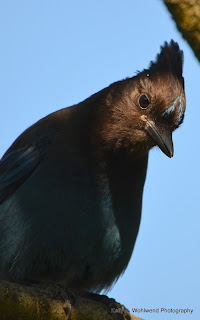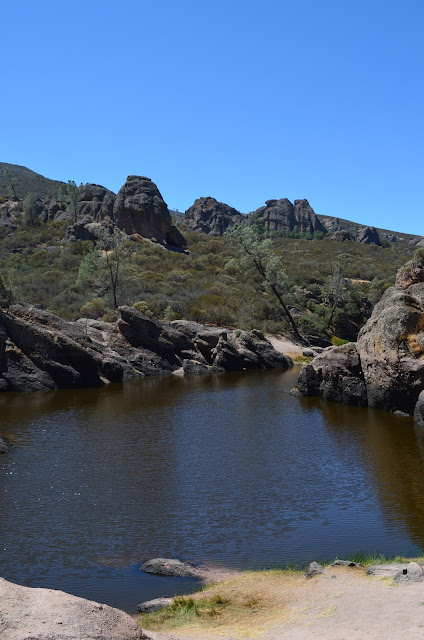Hello Fellow Birders! (Or birders to be).
It's been a long time since my last post (I know, shame on me). I recently returned to the stunning Sierras and of course saw and heard a lot of birds. Well naturally I need to write about it and share some of my stories! I am going to save a very special post for a bird that tugged at my heart strings, the American Dipper (coming soon!).

 |
| Sierra Valley at sunrise, photo by Kelly Wohlwend |
It's been a dry year in California. Anyone there can tell you and I witnessed the drought first hand. Not only was the air in Sacramento filled with the campfire smell of a large brush fire that had erupted on my departure, but the birds weren't as prolific. That doesn't mean I don't have birds to talk about and pictures to share! I must stick with tradition and start with the bird count...here it is.
(* = First time sighting!)
 |
| A page from my journal |
American Coot Hairy Woodpecker Tri-colored Blackbird
American Dipper Hermit Thrush Turkey Vulture
American Kestrel Horned Lark Warbling Vireo
American Robin Lazuli Bunting* Western Tanager
Barn Swallow Marsh Wren Western Wood Pewee
Black-crowned Night Heron Mountain Bluebird White-breasted Nuthatch
Brewer's Sparrow* Mountain Chickadee Wilson's Snipe*
Chipping Sparrow* Nashville Warbler Wilson's Warbler
Clark's Nutcracker Northern Flicker Yellow-headed Blackbird
Cliff Swallow Osprey Yellow-rumped Warbler
Common Raven Pied-billed Grebe Yellow Warbler
Dark-eyed Junco Red-breasted Sapsucker
Downy Woodpecker Red-winged Blackbird
Total Count: 43
Evening Grosbeak Sandhill Crane
Great Blue Heron Steller's Jay
Golden-crowned Kinglet Swainson's Thrush
I revisited a few places in the Sierras, namely Sierra Valley. But some of the most amazing birding was right at camp. I decided to wake up at 4:00am one morning to record all of the birds I heard since the morning chorus is so spectacular. Here is one page of my journal (one of 3.5). It was rather fascinating to record what birds joined the chorus and when they left. The western wood-pewee was the first to join the chorus, which was later enhanced by what sounded like hundreds of Cassin's and Purple Finches. It's very peaceful to sit and listen to nothing but birds for hours.
 |
| Black-crowned night heron by Kelly W |
 |
| Wilson's snipe photo by Kelly Wohlwend |
Back in Sierra Valley, where most of the bird action happened. Upon arriving, we were immediately graced with the presence of a juvenile great blue heron and the loud, quorking sounds of sandhill cranes off in the distance. One of the first sightings of the day was an American Kestrel, perched on the fence post. As we drove the car down the gravel road, stirring up dust behind us, it flew out and landed on another post further down, on and on, until it gave up on perching and flew away over the bone dry field. It was indeed bone dry. The cows were grazing closer to the water sources and those water sources were merely muddy puddles, dotted with cow hoof prints.
The marshy environment opened up the viewing for different birds, such as the black-crowned night heron and wilson's snipe, which was a lifer for me! Their very elusive nature and habit of running quickly from one brush patch to the next, made them almost impossible to photograph. I know it's not much to look at and this bird's magnificent, long, straight beak is hidden behind the reeds, but here is my only photo of the wilson's snipe. These birds also have a hummingbird like flight display. When they dive, their fanned tail feathers create a loud wooping sound, which can literally be heard across the valley.
 |
| Sandhill cranes by Kelly Wohlwend |
In the early morning light, a pair of sandhill cranes flew overhead, vocalizing the entire time. Earlier I witnessed a coyote taunting a pair of sandhill cranes in the distance. Eventually the cranes were fed up with the coyotes antics and chased it away. Perhaps the large chunks missing in this crane's wings are a result of a coyote encounter.
 |
| Art and writing by Kelly Wohlwend |
We continued on to the metal bridge where hundreds of cliff swallows nested and fed. It was shocking the change the valley had undergone from the drought. The white-faced ibis's were gone and the yellow-headed blackbirds were fewer. The marsh wrens had been forced to nest close together where the water remained and we could hear their angry bickering the entire way. The grasses were too short for bitterns to hide in in most places and they eluded us this year, as well.
 |
| Art and writing by Kelly Wohlwend |
The bridge did not disappoint. I watched the cliff swallows dancing over the muddy river below, the occasional splash of carp disturbing the surface. A fledgling that fell out of the nest was perched precariously on a lily pad flower, the parents doing their best to feed it. Meanwhile the sun was rising and the lack of shade and clouds was beginning to take its toll. The temperatures were climbing well into the 80s before 9 am with a promise to hit the 90s shortly. It was time to go.

Yuba Pass was another amazing bird spot. This year the white-headed woodpecker had already left the nest but I did revisit the same stump as last year. I was delighted to see and hear my first lazuli buntings! A beautiful blue and white bird with an orange stripe across the chest. Unfortunately I couldn't get a decent photo, or any photo at all for that matter. But as I stood in the meadow, surrounded by small firs and pines and a patch of willows, I watched the birds dance overhead, singing.
After a while I gave up on trying to get any bird photos, but I did manage to capture my first chipping sparrow! The photo is a bit blurry since the bird was really far away, but this male is displaying its stunning burnt red cap and white eyebrow stripe.
 |
| Chipping Sparrow |

There was another bird acting strangely as I watched it follow an adult robin around. I first saw it up in a fir tree on a dead branch and snapped a picture, confused. After a while, as I watched it not leave this robin's side, I was given a clue to its identity. I am still slightly perplexed by the heavily notched tail, but this appears to be a juvenile cowbird. These birds as adults lay their eggs in the nests of birds from another species, forcing that bird to raise their young. The robin in the photo is likely this birds adopted parent since it wouldn't leave her (assuming its a female robin) side.
My trip to the Sierras this year was different than last year. I love birds and every time a bird flew by or sang I had to stop and listen and try to get my camera or binoculars out. But the drought had really affected the birding this year and I had made it my goal to enhance my journaling skills and try to draw birds more effectively. I think I achieved that goal and I can't wait to return to one of my favorite places on earth!
Until next time remember to keep your eyes on the sky! (And if my journaling has inspired you...a book and pen in your hand!)









































